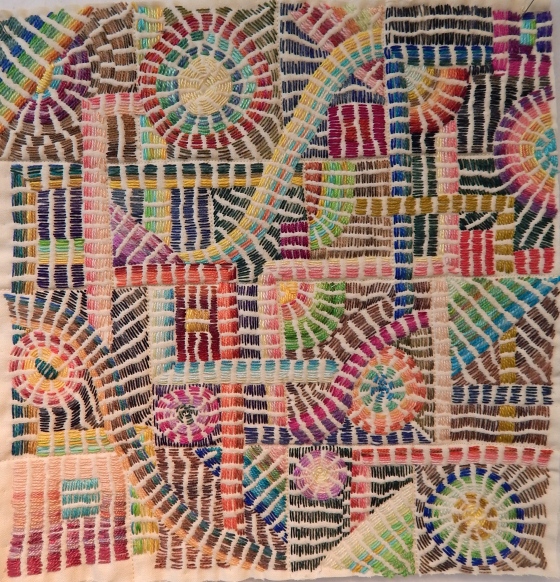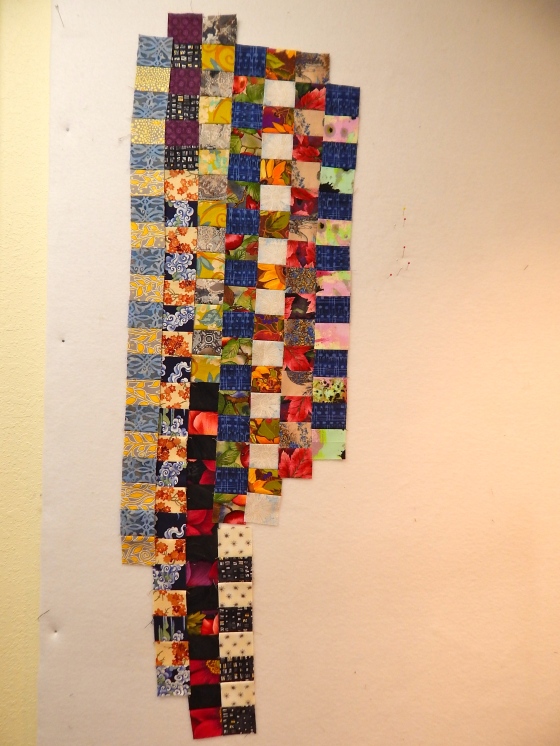So has everyone seen the fabric twine? It must be on Pinterest, because it is so cute. I saw it on The Quilt Show website. The first time I saw it I thought, Ooh, pretty! But the second time I saw it I was hooked. They used it to make a little rug! So I clicked over to the tutorial. I needed strips of fabric. I do believe I have a box of strips somewhere.
I found the box of strips, and soon I was MAKING TWINE. Now, to be fair, she did warn that it was a little hard on the hands. Oh yeah. That twisting motion was very hard on my hands. I made this much, and knew that twine making was not in my future.
That made me a little mad, so I went back to the box of strips. There were plenty in there. I could make another knitted rug. I really do like these rugs. I have two in my kitchen, and they are nice and cushy to stand on. Plus, they are easy to wash. And free. And they use up a lot of fabric that I would otherwise be donating to the thrift store.
Okay, so I got that rug started. The strips in the box were mostly neutrals, both darks and lights. I liked that idea, and decided to add just a few sparks of color once in a while.
So about a week later I went into the studio with the intention of cleaning up. There were still some strips leftover in that box. I was thinking I would just toss them. I made the mistake of actually LOOKING into the box. There were three squares that I had started on a few years ago. They were from a fabric panel that had old inn signs on it. I really did like those signs, and I liked the way I had outlined them with the strips. Oh, plus, for some reason, there were two paper-pieced blocks in there. Maybe I should use these strips up and make a little quilt.
ONE WEEK LATER, (and of course, with lots more strips cut out) I finished another WAY TOO BIG quilt top. It was very fun to work on this quilt, and it was a nice break from using my hands so much (machine piecing instead of hand work.) But 72″ X 72″? That’s gonna be a lot of dang quilting.

























